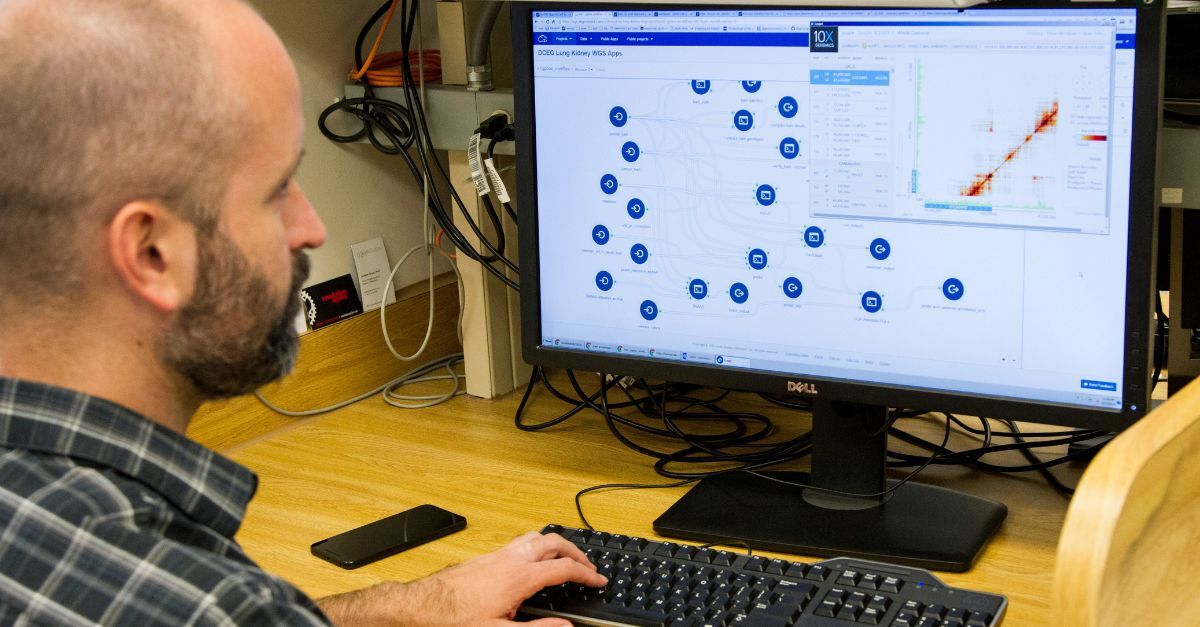4 min read
How to Get Started With Generative AI in the Cloud
Generative AI is transforming how businesses operate by offering new ways to automate complex tasks, analyze massive datasets, and enhance customer...
Artificial Intelligence (AI) is revolutionizing the business world at an unprecedented pace. From automating mundane tasks to providing deep insights through data analytics, AI technologies are becoming indispensable for modern enterprises. Among these advancements, a particularly transformative concept is Retrieval-Augmented Generation (RAG).
RAG stands out because it significantly enhances the capabilities of generative AI systems by making them more accurate and contextually relevant. But how does it do it? And how can your business benefit from this technology?
In this guide, we’ll explore what RAG is, how it works, and a few potential use cases to show you how you might be able to put it to use for your organization.
RAG is a cutting-edge AI technique designed to enhance the capabilities of generative AI models, specifically large language models. Traditional generative AI systems produce responses based solely on the data they were trained on.
While these models can generate coherent and contextually appropriate text, their knowledge is constrained to the training data, which may be outdated or incomplete. RAG addresses this limitation by integrating external data sources into the generative process, thereby providing more accurate and contextually relevant responses
The process of RAG involves several key steps that transform how generative AI systems gather and utilize information.
At the core of the RAG process is the retrieval phase, where the system searches for relevant information based on the user's input. This retrieval is powered by a vector database that transforms textual data into mathematical vectors, a process known as embedding. These embeddings help the model understand the semantics and context of the text, making it easier to fetch the most pertinent data points.
Once the relevant data is identified, it undergoes preprocessing, which may include tasks like deduplication and chunking to ensure the data is optimally formatted for use.
In the next phase, the retrieved information is integrated into the prompt provided by the user. This augmented prompt serves as an enriched input for the language model, which then proceeds to generate a response.
The integration of external data allows the RAG model to produce answers that are not only contextually relevant but also up-to-date and factually accurate, reflecting the latest information available. This method addresses one of the traditional limitations of standalone language models — relying solely on their pre-existing training data, which might be outdated or incomplete.
The final output is a detailed and tailored response that can include citations of the sources from which the information was derived.
The potential of Retrieval-Augmented Generation spans a wide array of business applications. From enhancing customer support to providing advanced decision-making tools, RAG technology can significantly improve the effectiveness and efficiency of various business processes. Let’s consider a few possible use cases.
One of the most immediate applications of RAG is in customer support. Traditional customer service chatbots often provide generic responses based on predefined scripts or limited datasets. In contrast, a RAG-enabled chatbot can deliver highly specific, context-aware answers by integrating real-time data from various sources, such as product manuals, past customer interactions, and current company policies.
For example, if a customer inquires about a newly launched product, the RAG system can pull the latest information directly from the product database, ensuring that the response is accurate and up-to-date. This capability not only improves the customer experience but also reduces the workload on human customer service representatives.
In sectors like finance and healthcare, timely and accurate information is crucial for decision-making.
Financial analysts, for instance, can benefit from a RAG system that integrates live market data, financial reports, and economic news to provide real-time insights. Analysts can make more informed investment decisions and respond swiftly to market changes.
Similarly, in healthcare, a RAG-augmented AI model can assist medical professionals by providing the latest research findings, patient records, and drug databases, thereby supporting more accurate diagnoses and treatment plans.
RAG can significantly enhance recommendation engines by incorporating a broader range of data sources. In an e-commerce setting, for example, a RAG system can analyze user purchase history, trending products, and customer reviews to offer highly personalized product recommendations. This level of personalization can lead to increased customer satisfaction and higher sales conversion rates.
Additionally, in the context of employee training, a RAG system can recommend courses and programs tailored to an employee's role, career aspirations, and past training, thereby fostering continuous learning and professional development.
RAG systems can handle complex queries that require contextual understanding far beyond the capabilities of traditional LLMs.
For instance, if an employee queries about the company's tuition reimbursement policy, a RAG-augmented AI could provide not only the policy details but also information on nearby schools offering relevant courses, recommendations on suitable programs based on the employee's job role, and even assist with the application process.
This functionality streamlines processes and helps employees make better-informed decisions.
The travel and hospitality industry can also benefit from RAG technology. Imagine a chatbot that can provide detailed information about vacation rentals, including beach accessibility, availability of volleyball courts, and lifeguards on duty — all based on the most current data. Such a system could even assist with booking accommodations and planning activities, offering a seamless and personalized travel experience.
For example, during a volleyball tournament in the Canary Islands, a RAG-enabled AI could identify the highest-rated beach vacation rental and initiate the booking process for a two-bedroom cabin within walking distance of the event.
As you can see, RAG is a significant leap forward in the realm of generative AI that comes with transformative benefits across a multitude of industries. RAG technology enhances the accuracy, timeliness, and personalization of AI-generated responses by integrating real-time, contextually relevant data from diverse sources.
Whether it's improving customer support, aiding in advanced decision-making, or providing sophisticated query handling, RAG has the potential to revolutionize how businesses operate and interact with data.
At Promevo, we position ourselves as a leading AI enablement partner, specializing in Google Cloud and Google AI products. Our expertise allows us to help businesses harness the power of AI to build innovative, AI-powered solutions tailored to their specific needs. From initial consultation to deployment and ongoing support, we offer comprehensive services to ensure the successful implementation of these advanced technologies.
If you’re ready to explore the potential of AI and RAG in your business, contact us today and we’ll show you how to get the most out of this powerful new technology.
Meet the Author
Promevo is a Google Premier Partner for Google Workspace, Google Cloud, and Google Chrome, specializing in helping businesses harness the power of Google and the opportunities of AI. From technical support and implementation to expert consulting and custom solutions like gPanel, we empower organizations to optimize operations and accelerate growth in the AI era.

4 min read
Generative AI is transforming how businesses operate by offering new ways to automate complex tasks, analyze massive datasets, and enhance customer...

11 min read
AutoML, or Automated Machine Learning, is a suite of tools within Google Cloud's Vertex AI that helps automate various aspects of the machine...

5 min read
Research and information discovery is transforming rapidly. Artificial Intelligence (AI) has revolutionized how organizations search for, analyze,...